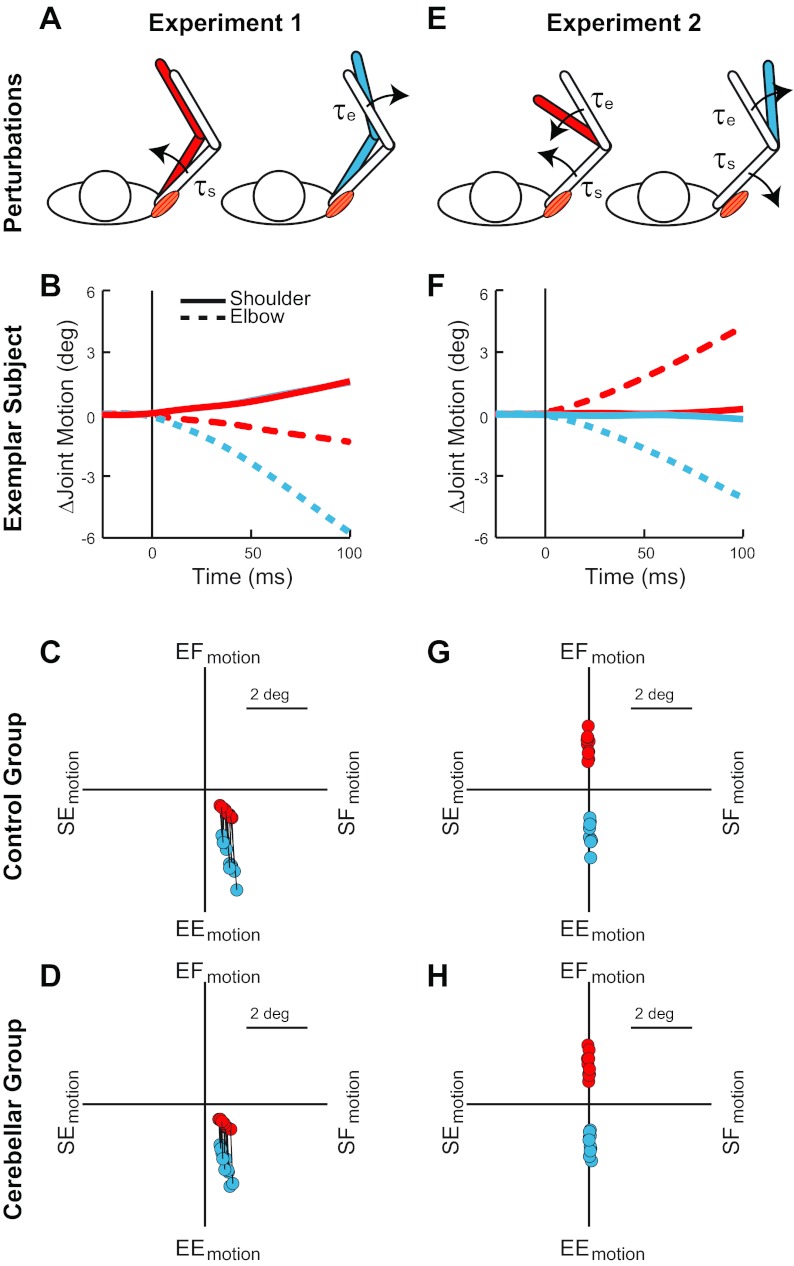Fig. 1.
Limb dynamics and torque conditions. A: conditions of experiment 1 where shoulder flexion torque (red-filled arm) and elbow extension torque (blue-filled arm) displace the limb in different trials. The shoulder extensor muscle needs to provide more compensation during the shoulder torque condition than the elbow torque condition. B: data from an exemplar healthy subject showing that the 2 perturbing torques of experiment 1 initially cause a similar change in shoulder motion (solid lines) but clearly different elbow motion (dashed lines). C: pattern of joint displacement 50 ms after the perturbing torques of experiment 1. Data are shown for each control subject, with black lines connecting their data from the 2 conditions. EF, elbow flexion; SF, shoulder flexion; EE, elbow extension; SE, shoulder extension. D: data from the cerebellar-damaged subjects in the same format as in C. E: conditions of experiment 2 where flexion torque is applied at both joints (red-filled arm) and extension torque is applied at both joints (blue-filled arm) on different trials. The 2 perturbations require increased compensation and decreased compensation from the shoulder extensor muscle, respectively. F: data from the same exemplar healthy subject showing the substantial elbow motion and negligible shoulder motion induced by the perturbations. G: pattern of joint displacement 50 ms after the perturbing torques of experiment 2. Data from each control subject are shown. H: data from the cerebellar-damaged subjects in the same format as in G.

